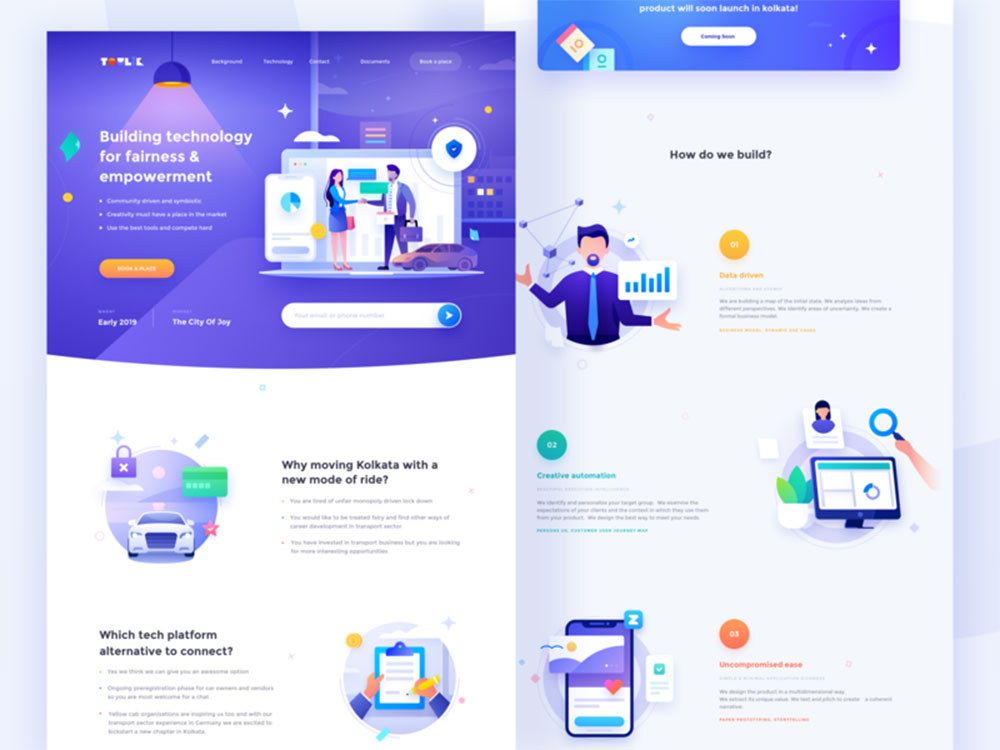7 Mistakes That Deter Website Traffic

If you own a website and spend time maintaining and designing it as a platform, odds are you’re hoping people will visit. No matter if you write blog posts, or product reviews, curate an online storefront, offer account management for those subscribing to your services, or whatever else, a website has become the standard hub of an enterprise’s value.
Most graphic designers and web designers will often tell you that simplicity is what you need to aim for. Like a sharp menu in a three-star Michelin restaurant, keeping the options simple but refined and appealing can help people understand the concept and how to navigate around it.
Even the websites for some of the more exclusive brands on the planet have simple, attractive pages that showcase announcements and simple navigation paths clearly – you can consider Rolls Royce as a sterling example.
This begs the question – if we know the best UX design options, use a capable web design company, and care for our promotional outreach – what techniques should we actively avoid to make sure our hard work doesn’t go to waste? In this post, we’ll discuss seven excellent methods of deterring website traffic – so you are completely aware of the mistakes to watch out for.
Clashing Branding, Fonts & Graphic Design
A sleek interface should always be a priority when designing a website. If you have an overly complex layout, too many integrated widgets, clashing fonts and colors, and even a confusing layout, it’s unlikely that your visitors will stay on your page for a long.
For example, if a customer has to root through four submenus in order to navigate your product listing and still can’t find what they need without scrolling three pages worth of content, this is the equivalent of a digital assault course, and it will deter the completion of your sales funnel.
A website isn’t just a static page with good graphic design integration, however. It’s a tool in which function and form must be well-balanced. Any reliable web design service will help you prioritize simplicity without losing function, and help you achieve your branding goals around that.
Auto-Playing Media
Even top websites will auto-play video, use motion graphics, or implement visual materials that keep the design interesting and dynamic. That said, it’s essential to be careful when auto-playing media, especially sound.
After all, you can’t ever assume what the audio device configuration of your user may be. The last thing you need is to give someone a shock thanks to a full-volume business intro video playing as soon as they land on your homepage.
Moreover, auto-playing media may affect how quickly your page loads, and which devices it could be compatible on. For this reason, slower load times can penalize your SEO ranking and thus expose you to fewer visitors over time.
Pop-Up Advertisements
No one likes pop-ups, and for the most part they’ve been stamped out, as modern web browsers will often implement browser pop-up protections for their visitors.
That’s not always the case however, and even then, using them can be a frustrating experience for your website visitor. There are some exceptions. After five minutes on your homepage, for example, a small web chat window for your AI chatbot could pop up on the bottom right of the page, asking your visitor if they need any help with a query, a perfectly ignorable prompt.
Advertisements, however, should be relegated to your banners and integrated in the general design of the website. Better yet – try to avoid integrating them altogether. If someone is on your website, they’re already a generated lead, and so you don’t have to be quite so forceful except for in singular areas that push promotions.
Slow Low Times
There are many contributors to slow website load times, and they all need to be addressed. For example, they might include images that haven’t been compressed properly, slow-loading widgets, poor web hosting services, an overabundance of rich media and more.
If this is happening, then a full website audit is essential. This way, you can properly isolate the most difficult contributing factors and either alter their function or be rid of them entirely. For example, most websites will compress images used to 70% quality at a certain fixed resolution so they look clean and well-integrated without harming the end user.
Broken Or Improper Linking & Indexing
There’s nothing more annoying than seeing an important website resource, trying to use it, and suffering a 404 error message. This is where taking a close eye at your linking structure and your indexed pages can have a positive effect.
For example, if a promotion draws in a customer but then links to an improper page, or doesn’t apply the discount correctly, or perhaps your advertised products only link to that which is available, then that can prevent someone from ever looking to your storefront again.
Sometimes, broken links are a matter of poor web maintenance and “hygiene” if you will, other times it’s because of broken pages and integrations. Either way, helping your users become vigilant about this by implementing a quick “report a website bug” feature can help you keep on top of issues before they cause damage. Again, regular website audits and triple-checking any new correlated links can have a huge, and positive impact in kind.
A Lack Of Mobile Responsiveness
Most web users utilize portable devices like smartphones or tablets in 2023, and they have been for a while. For this reason, if your website doesn’t adhere well to modern devices and mobile responsiveness, that can be a problem.
Remember, it’s not just the layout that needs to adapt, but scaling, font quality, and also navigability. Moreover, as a screen is turned the device will often reformat the app and page to a different dimension or aspect ratio, and this needs to be taken into account as well. Finally, remember that while 5G is now the norm for most people, depending on the coverage of the area they’re in or the limits of their device plan, a customer could be using 3G or even 2G temporarily, which is why it’ healthy to have mobile responsiveness as an utmost priority.
To gain greater control over the delivery of your brand platform in a mobile space, you can always invest time and money into the development of a simple but effective app. This gives you more control over the mobile integration you use – for example, leveraging utilities like Face ID on iPhone to ensure your app account management remains as secure as possible. If you can integrate that correctly, you may be surprised at the result.
Improper Website Security Certificates
SSL certifications and encrypted connections through the HTTPS protocol are now considered the standard, to the point where if you lack either of these,a web browser might warn your visitor that the website is unsafe and to only proceed if they can trust you.
Well, some might still trust you, but many won’t. For this reason, it’s imperative that you work with your web hoster to ensure all security guarantees are implemented. This way, someone using you for their sensitive account management won’t have to worry about this data transfer being unencrypted and open for potential subversion.
With this advice, you’re sure to avoid deterring the web traffic you need. With these methods and a healthy approach to marketing and SEO, also in giving people a reason to return such as via a regularly updated blog, you can deliver effectively on your online priorities.
- Crisp White Color Palettes for Clean Designs - 21 May 2024
- Unique Construction Website Design Examples That Work - 21 May 2024
- The Heineken Logo History, Colors, Font, And Meaning - 20 May 2024









